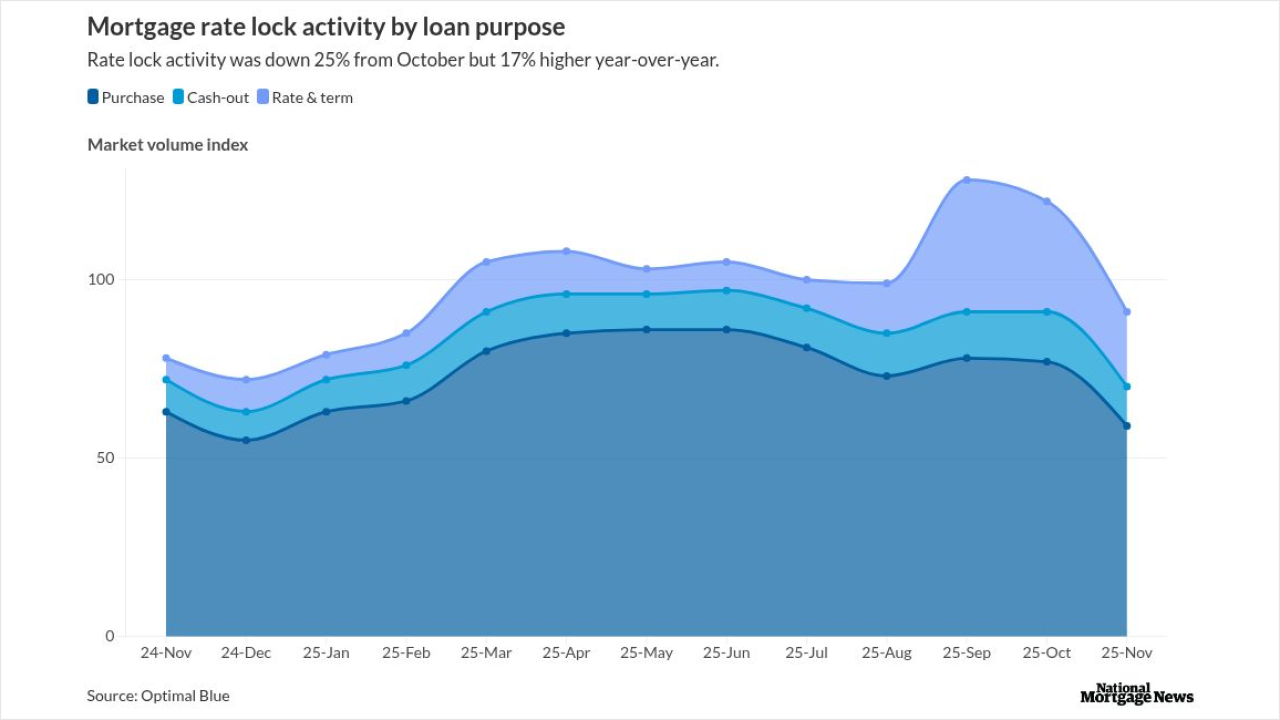

With the myriad home price indices available to the mortgage industry, it's difficult to understand their differences, let alone determine which provides the most cost-effective insights about a particular market. Granularity is a key selling point, but not a one-size-fits-all solution.
People who didn't foresee the bursting of the housing bubble during the Great Recession wondered whether or not more use of granular HPI data would have clued them to the unprecedented and widespread depreciation that occurred sooner.
But today, lenders, investors and servicers are more concerned that they have accurate analytics to help them measure the potential for more localized bubbles that could affect their portfolios.
"You may have some concentration in a specific market and you'd want to know, 'Gee, is that market overheated? Are we going to see a crash in prices?' I think there's very little concern right now that the national market or national price indices are overheated," said Frank Nothaft, chief economist at CoreLogic.
Mortgage businesses also have been increasingly using local home price indices to identify sustainable appreciation that could bolster the valuations of portfolios that contain performing loans.
"If you have good appreciation in an area, you should have less defaults, in theory," noted Ed Fay, founder and CEO of Fay Servicing in Chicago, a company that focuses primarily on special servicing of distressed loans.
Distressed loan workouts usually call for more exact loan-level measures like automated valuation models or broker price opinions, so Fay tends to use those methods more frequently. For him, additional granularity in HPI below state level is much more valuable, but how much more geographic granularity beyond that is needed before moving to loan level measure like a BPO or AVM would be "a function of price.
It also depends on what I'm using it for," he added. In addition to using local HPIs for portfolio valuation, Fay recently considered a ZIP-code level HPI among many factors in deciding where to set up a new office.
Publicly available home-price indices such as CoreLogic's Case Shiller indices or the Federal Housing Finance Agency's originally only drilled down to the core-based statistical area level. Later, other indices drilled down further to
And recently, following the release of more granular, experimental
"Overall we find the ideal level of house price index aggregation in large cities is at the five-digit ZIP-code level," said FHFA staff members Alexander Bogin, William Doerner and William Larson in the paper. "In small cities, a city-level index is sufficient."
The mortgage industry and its vendors tend to agree that the granularity of HPI data has its limits and the ones the FHFA suggests sound reasonable.
It might be tough to use ZIP-code level data in an area where there aren't enough homes or transactions to create a statistically sound data set, so the limit of granularity in small cities makes sense, said Mark Fleming, chief economist at First American.
"The problem with granularity is you run out of data," he said. "As you get further out, you don't have enough information to realistically predict with any degree of accuracy."
But the FHFA's preliminary conclusion is not a one-size-fits-all answer for how granular the HPI should be in all contexts.
Lenders, servicers and investors tend to need more robust and frequent HPI data sets than are available through public sources like the FHFA when it comes to portfolio management.
"Everyone has a different view of how they want to manage risk, so unfortunately there is no general rule that says, 'at this point you need to stop,'" said Craig Zielazny, a senior vice president at AVM provider Platinum Data Solutions, a subsidiary of Mercury Network.
Also, how granular home price index data needs to be is partly a function of how much accuracy a user wants, and that may depend at how much is riding on that accuracy.
"It depends on how big your portfolio is, how much prices are moving up vs. down, how much you care about the last 1% or 5% of value and who your trading partner is," said Allen Weiss, founder and CEO of Weiss Analytics.com. "If you are trading with someone with much better information than you, over time you are going to perform a lot worse."
While theoretically, portfolio managers could get the most accurate read at the property level itself, they often are using home price indices because they want a broader data for reasons that may include affordability.
To what degree homes or their locations in a particular area are similar also plays a role in decisions about how far to drill down into the data, and what boundaries for data sets should be used, said Julian Grey, mortgage market leader for Black Knight's Data & Analytics division. Sometimes even within a single ZIP code there can be wide disparity in housing prices, and individual consumers might have different perceptions of the same type of home or location.
"Housing is incredibly personal," she said.




